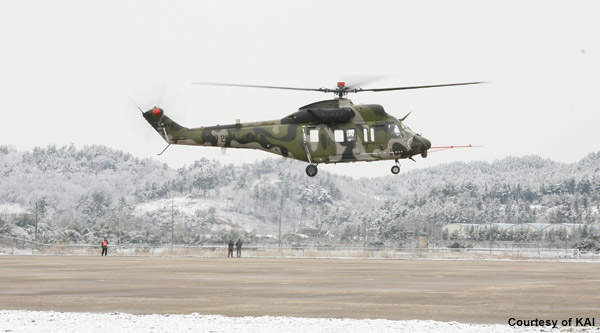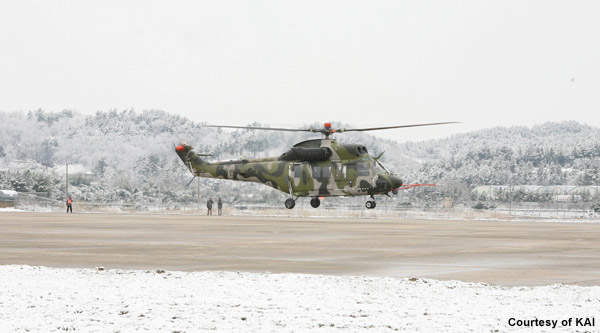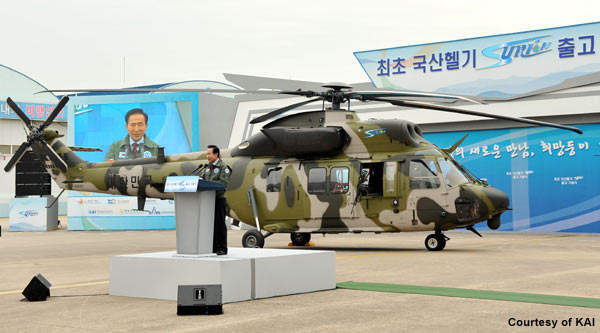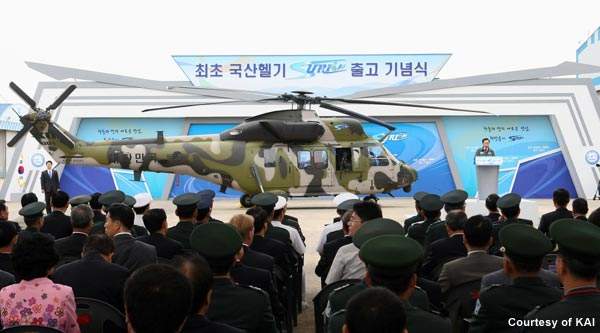
The South Korean KAI Surion, twin-engined light utility helicopter.
The KAI Surion, a twin-engined light utility helicopter, was designed and developed jointly by Korea Aerospace Industries (KAI) and Eurocopter to meet the requirements of the South Korean Army and Air Force. The helicopter will be used in a variety of applications, including troop assault, search and rescue, tactical lift, liaison and medical evacuation. It can accommodate a pilot, co-pilot, two gunners and nine troops.
The helicopter will replace the ageing UH-1H attack helicopter and the 500MD light helicopter fleet of South Korean Army and Air Force. KAI is also planning to build civilian variants of the helicopter in 2012. Eurocopter has joined hands with S&T Dynamics of Kyungnam, South Korea, to develop the drive system for the helicopter.
KAI Surion helicopter orders and deliveries
A total of 245 Surion helicopters were ordered by the Republic of Korea Army (ROKA). The deliveries began in 2012 and will last for eight to ten years.
Korean helicopter programme
The Request for Proposal for the development of KUH was released in April 2005. Various international companies, including AgustaWestland, Bell Helicopter and Eurocopter, participated in the bidding process.
In December 2005, Eurocopter was selected as the co-partner to KAI in the development of the Surion helicopter. KAI holds a 70% stake in the research and development, while Eurocopter has 30%. In the ten-year production phase, KAI will have a 60% stake and Eurocopter will own 20% stake, while other companies will hold the remaining stake.
The Korean Helicopter Programme (KHP) was launched in June 2006. It is divided into six phases, namely project definition, programme development and production of four prototypes, prototype ground testing, prototype flight test, certification and military standardisation, initial production, and series production launch.
The preliminary design review (PDR) of the helicopter was completed in June 2007. The first prototype was rolled out in July 2009. Flight tests were conducted later on the initial prototype model.
Surion finally took its maiden flight in March 2010 and entered into service in 2012.
Contractors
A $1.3bn contract was awarded to Korean Aerospace Industries and EADS Eurocopter by the South Korean Army in June 2006 for the research and development of the Surion helicopter. It is one of the biggest contracts ever awarded to a non-US company.
The South Korean Defence Ministry will award another $4.4bn contract to KAI and Eurocopter in 2011 before the mass production begins. The project was initially named Korean Utility Helicopter until 2007. It was renamed to Surion after the roll out of the first prototype helicopter in July 2009.
Being the sub-contractor, Eurocopter provides main rotor components, a main gear box, boom and tail gearboxes, an automatic flight control system and a rotor mast for the Surion.
Israel-based Elbit Systems was awarded a contract in March 2009 to render helmet-mounted displays (HMD), vehicle information systems (VIS) and a data transfer system (DTS). The company will also engineer and integrate the helicopter’s avionics systems.
In March 2007, Hanwha Corporation, a subcontractor in the KUH development, awarded a $3.5m contract to GKN Aerospace for supplying fuel bladders to the KHP. These fuel bladders are manufactured with a special material, which is more flexible than current materials available in the market.
KAI Surion helciopter features
The helicopter features an inertial navigation system, global positioning system, an automatic flight control system, forward-looking infrared radar and a digital MAP.
It is also equipped with a health and usage monitoring system, a modular weapon system, a counter measure dispensing system, infrared counter measures, electronic counter measures, a radar warning receiver, a hands-on collective and stick, and an on-board inert gas generating system.
Armaments
The helicopter is fitted with six BGM-71 tube-launched optically tracked (TOW) air-to-air missiles or four rocket pods. The BGM-1 TOW is an anti-tank guided missile designed and developed by Hughes Aircraft. The maximum operational range of the missile is 3,750m. It weighs around 3.9kg to 5.9kg.
Surion self-protection systems
EADS Defence and Security installed a MILDS AN/AAR-60 self-protection system in the Surion helicopter. The self-protection systems are incorporated with a spectral of sensor suite.
The Surion protects itself from attack by detecting and tracking ultraviolet emissions radiated by approaching missiles. The ultraviolet rays are more effective at lower and slower targets. The UV rays are more vulnerable to atmospheric conditions.
GE T-700 turboshaft engines
The Surion is powered by two GE T-700 turboshaft engines, each of which can produce 1,383kW of power and are manufactured by General Electric. The engines offer high reliability and maintainability compared with other engines in its series.
The length and diameter of each engine is 1.1m and 0.39m respectively. The dry weight of the engine is 206kg. Each engine can produce a maximum of 1,409kW of power at sea level.
KAI Surion performance
The Surion helicopter can climb at the rate of 2.53m/s and has a cruising speed of 269km/h. The range and service ceiling of the helicopter is 260km and 3,000m respectively. The maximum endurance of the helicopter is two hours. Surion weighs around 4,817kg and its maximum take-off weight is 8,709kg.





